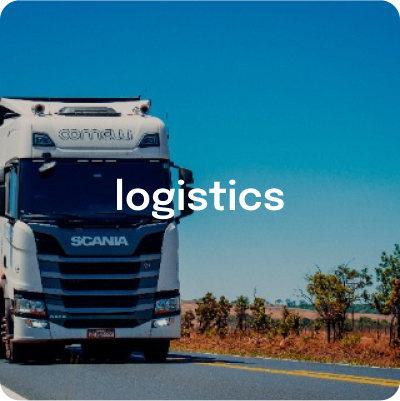- 1. AI-Powered Inventory Management
- 2. IoT Sensors for Real-Time Monitoring
- 3. Robotics and Automation in Warehouses
- 4. Cloud-Based Storage Management
- 5. Smart Lockers and On-Demand Storage
- 6. Green Storage and Energy Efficiency
- 7. Data-Driven Decision Making
- 8. Personalization Through Technology
- Why These Trends Matter
- Final Thoughts
- FAQs
Think about how far storage has come. Just a decade ago, most people thought of storage as a dusty warehouse full of boxes, or a self-storage unit where you’d toss things and forget about them. Fast forward to 2025, and storage has transformed into something much smarter, more efficient, and even more eco-friendly.
Today, technology is rewriting the rules of how businesses and individuals store, track, and access their belongings. Whether you’re a company managing huge inventories or a household looking for extra space, smart storage is no longer a luxury—it’s quickly becoming the norm.
Let’s take a closer look at the biggest smart storage trends in 2025 that are changing the game.
1. AI-Powered Inventory Management
Gone are the days of manually counting boxes or struggling with missing items. Artificial Intelligence (AI) is now at the heart of smart storage systems.
- AI can predict demand, helping companies stock up on items before they run out.
- Smart algorithms track real-time inventory, minimizing human error.
- Even for personal storage, AI-driven apps remind you what you’ve stored, so you don’t forget about that winter coat or extra furniture.
It’s like having a digital assistant that knows your storage better than you do.
2. IoT Sensors for Real-Time Monitoring
The Internet of Things (IoT) has made storage spaces more intelligent than ever. Small, connected sensors are being installed in warehouses and storage facilities to monitor:
- Temperature and humidity (essential for food, medicines, and sensitive equipment).
- Security (detecting unauthorized access or tampering).
- Space usage (so you know exactly how much space is left).
For businesses, IoT means fewer losses and safer goods. For households, it means peace of mind knowing your belongings are being cared for.
3. Robotics and Automation in Warehouses
If you imagine a modern warehouse, you’ll probably picture robots zipping around with boxes. That’s not science fiction—it’s reality in 2025.
- Robotic arms are handling packaging and sorting.
- Autonomous vehicles transport goods within warehouses.
- Drones are being used for quick inventory checks.
This level of automation makes operations faster, safer, and far more efficient.
4. Cloud-Based Storage Management
Paper records are a thing of the past. Today, cloud technology is making storage smarter by offering:
- Centralized access – Businesses can view their inventory anytime, from anywhere.
- Integration with other systems – Logistics, sales, and storage data all sync together.
- Scalability – You can easily increase or decrease storage space without complicated paperwork.
Even individuals benefit from apps that let them log and track items stored in personal storage facilities.
5. Smart Lockers and On-Demand Storage
Urban living has created a demand for storage that’s flexible and accessible. That’s where smart lockers and on-demand storage come in.
- Customers can rent a locker or storage unit on a short-term basis.
- Access is often digital, using QR codes or mobile apps instead of keys.
- Some providers even offer door-to-door storage pickup and delivery.
It’s like Uber for your belongings—convenient, fast, and tech-driven.
6. Green Storage and Energy Efficiency
Sustainability is no longer optional. Smart storage in 2025 is focusing on being eco-friendly:
- Warehouses are powered by solar panels and renewable energy.
- Packaging materials are recyclable and biodegradable.
- Energy-efficient lighting and cooling systems are the new standard.
This not only reduces carbon footprints but also lowers costs in the long run.
7. Data-Driven Decision Making
Smart storage generates a lot of data, and companies are using it wisely. By analyzing storage patterns, they can:
- Reduce unused space.
- Predict seasonal demand.
- Plan smarter delivery routes.
In short, data helps businesses save money while serving customers better.
8. Personalization Through Technology
Finally, storage is becoming more personalized. Imagine opening your storage app and seeing:
- A visual map of where your items are placed.
- Reminders of when you last accessed them.
- Suggestions on whether you should recycle, donate, or keep certain items.
For businesses, personalization means tailored solutions—whether it’s cold storage for pharma products or bulk storage for e-commerce giants.
Read More: Prohibited Items for Self Storage
Why These Trends Matter
Smart storage isn’t just about cool technology. It’s about:
- Saving time – No more wasting hours looking for lost goods.
- Saving money – Efficient systems reduce wastage and unnecessary costs.
- Improving security – From IoT sensors to smart locks, safety is tighter than ever.
- Supporting sustainability – Eco-friendly practices align with global goals and customer expectations.
Read More: Benefits of Household Storage Services
Final Thoughts
Storage in 2025 isn’t what it used to be—it’s smarter, faster, and greener. From AI and robotics to eco-friendly warehouses, technology is reshaping the way we store and manage everything.
For businesses, adopting these trends means staying ahead of the competition. For individuals, it means convenience and peace of mind. One thing is clear: smart storage is not the future anymore—it’s already here.
FAQs
Q1: What exactly is smart storage?
Ans: Smart storage means using modern technology—like AI, IoT, and cloud systems—to make storing, managing, and accessing goods easier, faster, and more efficient.
Q2: Is smart storage only for big companies?
Ans: Not at all. While large businesses benefit from robotics and AI, individuals can also use smart lockers, mobile apps, and digital storage solutions.
Q3: Does smart storage cost more?
Ans: Initially, some technologies (like automation or solar energy) may require investment. But over time, smart storage actually saves money by cutting energy costs, reducing errors, and improving efficiency.
Q4: How does smart storage help the environment?
Ans: From reducing paper waste with digital systems to using renewable energy, smart storage practices make a big difference in cutting carbon footprints.
Q5: What’s the future of storage beyond 2025?
Ans: Expect even more AI-driven automation, fully autonomous warehouses, and seamless integration with e-commerce and logistics. Storage will continue to become smarter, greener, and more customer friendly.







